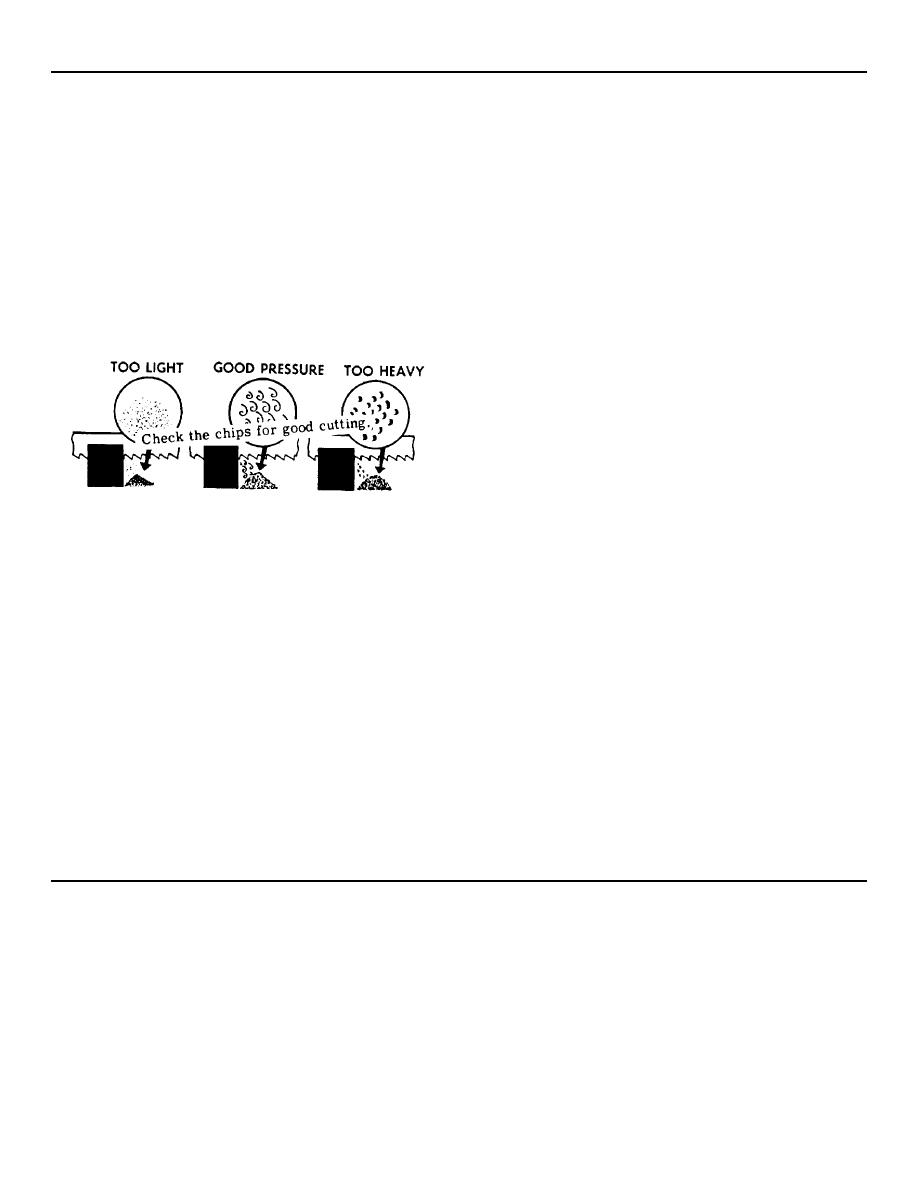
TM 9-3405-217-14&P
HOW TO SELECT AND USE POWER HACK SAW BLADES
Power hack saws automatically take a Full Stroke
for a better bite, without clogging. (OF course, the fee-
each time, automatically Lift the blade on reverse stroke
per tooth must be kept below the point of fracturing the
and apply steady cutting pressure throughout the length
teeth).
of the stroke
Large Sections and soft materials require coarse
The proper tensioning of the power hack saw blade is
teeth. Thin sections and hard-to-machine materials
most important. Insufficiently tensioned blades wear
require fine teeth.
rapidly, cut inaccurately and deliver a blank with a poor
finish. A blade tensioned too tightly breaks prematurely
USE HEAVY FEED PRESSURE
or pulls out at the pin hole.
Normally you should set the feed pressure as heavy
as possible without breaking the teeth or making the
blade cut crooked. Excessive pressure and stroke
speed increase the cutting rate at the expense of blade
wear. (When in doubt, keep pressure at maximum but
reduce the stroke speed
The heaviest practical pressure . . . and the fastest
reasonable stroke speed produce the most efficient
cutting
A feed-rate that is too light results in rubbing instead
If chips are burned you are feeding too heavy. If
of cutting; (tooth point overheat, soften and break down).
chips are fine and powedery you are feeding too light. A
free cut with nicely curley chips indicate ideal feeding
For optimum feed rate: Use heavy feed for hard, very
pressure, fastest cutting time and longer life.
dense material ---light feed for thin soft material. For
maximum production, you can increase feed by using
For most cutting jobs, the all-hard blade is first choice
coarse blades on soft materials. But remember to use
for straight, accurate cutting. The all-hard tungsten
moderate feed when straight, accurate cutting is
blade is unexcelled for retaining its sharp teeth. It
required.
handles work hardering materials, abrasive material,
stainless, high manganese steel and the low
USE PLENTY OF COOLANT
machinability bronzes. Molybdenum blades are good for
fast accurate cutting, but especially on low or medium
Start the coolant flow before the first cutting stroke.
alloy steels, iron and most non-ferrous metals.
Coolant is needed on materials (except cast iron, copper
and some brasses) to reduce friction, blade wear, and
You gain more by selecting the COARSEST TOOTH
chip clogging. Keep coolant flowing until job is finished
for the work. The is necessary for good chip appearance
and the blade is stopped. For best blade life and fastest
as more pressure can be applied
cutting time use TRIM EP, a product of Master Chemical
Corporation.
3

